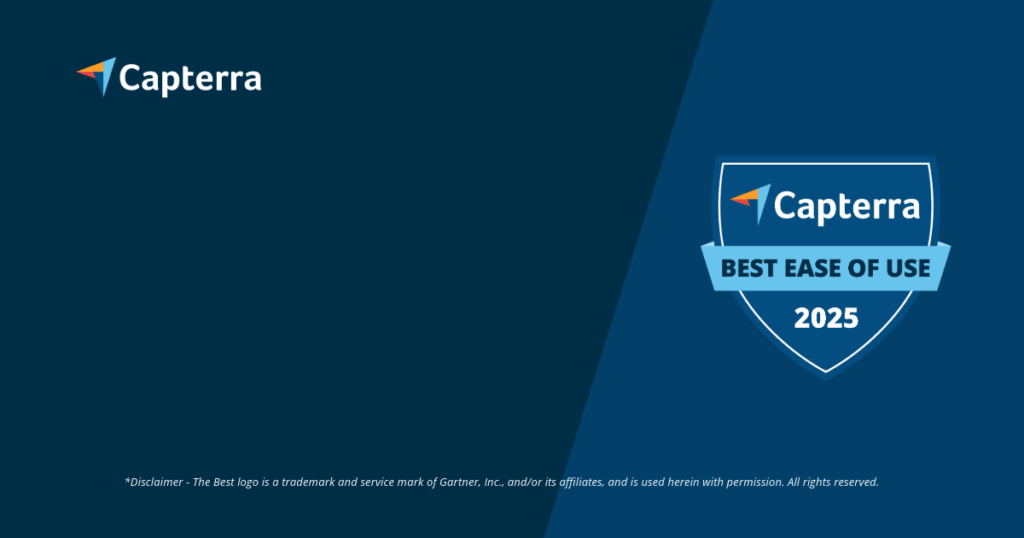Digital Defect Management: How to increase efficiency and quality in construction
The digital age has really shaken up the defect management in the construction industry – and that’s a good thing! Construction projects are becoming more complex, cost pressure is rising, and smart processes for error prevention and correction are simply worth their weight in gold. We at Valoon GmbH are all too familiar with the daily challenges you face as developers, tradespeople, and architects. That’s precisely why we have developed innovative software solutions that will noticeably simplify and optimize your defect management processes. In this article, we want to show you how you can not only save valuable time and costs with digital tools but also sustainably increase the quality of your construction projects and avoid legal pitfalls. Let’s discover together the great opportunities that digitalization holds for your defect management projects and how you can make them even more successful.
- Digital tools save time and costs in construction.
- The quality of construction projects is sustainably improved.
- Legal risks are minimized and pitfalls are avoided.
- Digitalization enables real-time documentation and communication.
What is defect management? Definition and significance
At first, it sounds like a lot of bureaucracy, doesn’t it? But essentially, this is a well-thought-out process. It’s about systematically identifying, documenting, discussing, tracking the status of defects during a construction project, and of course, resolving them. A defect, officially defined according to § 13 VOB/B, occurs when the finished structure does not correspond to what has been contractually agreed upon. This can affect usability, safety, or even the value of the entire project. A well-functioning defect management defect management system is therefore far more than just a pesky administrative task – it’s a cornerstone of your quality management and helps keep risks low. It ensures that everything goes according to contract and protects you from costly rework and nerve-wracking legal disputes. You can’t say it often enough: Professional defect management defect management is incredibly important because it safeguards the value and longevity of your structure.
Why is effective defect management crucial for construction projects?
Simply put: Effective defect management defect management is like the backbone for every successful construction project. It is your best helper to avoid construction delays, which often arise from undetected or poorly managed defects. When errors are recognized and corrected early, you can save on expensive rework and annoying consequential damages. This adds up to a significant cost saving throughout the entire project duration! Additionally, solid defect management ensures that your structure meets the agreed quality standards and all legal requirements. This not only pleases your clients but also strengthens your excellent reputation as a contractor. The defect management dafür, dass Ihr Bauwerk den vereinbarten Qualitätsstandards und allen rechtlichen Anforderungen entspricht. Das freut nicht nur Ihre Auftraggeber, sondern stärkt auch Ihren guten Ruf als ausführendes Unternehmen. Die digital defect detection in construction is becoming increasingly important as it makes processes faster and more accurate. At the end of the day, a proactive defect managementhelps minimize risks by significantly reducing warranty claims and potential legal disputes from the outset.
The role of digitalization in modern defect management
Digitalization is currently shaking up the defect management construction industry – and for the better! It replaces old, often cumbersome paper processes with fast, clear, and mobile solutions. Imagine: Software for digital defect management makes real-time documentation and communication possible directly from the construction site. Your field staff simply pulls out their smartphone or tablet, records defects, adds photos, voice notes, and exact location details on digital plans. All this information is immediately centrally stored and accessible to all project participants. This not only massively accelerates defect resolution but also makes collaboration and traceability much easier. This is where we at Valoon GmbH come into play: Our solutions allow for the easy integration of messaging services like WhatsApp for truly seamless Echtzeit-Dokumentation und -Kommunikation direkt von der Baustelle möglich. Ihre Mitarbeiter im Außendienst zücken einfach ihr Smartphone oder Tablet, erfassen Mängel, fügen Fotos, Sprachnotizen und genaue Ortsangaben auf digitalen Plänen hinzu. All diese Infos sind sofort zentral gespeichert und für alle Projektbeteiligten einsehbar. Das beschleunigt nicht nur die Mängelbeseitigung ungemein, sondern macht auch die Zusammenarbeit und die Nachvollziehbarkeit viel einfacher. Genau hier kommen wir von Valoon GmbH ins Spiel: Unsere Lösungen ermöglichen zum Beispiel die kinderleichte Integration von Messenger-Diensten wie WhatsApp für eine wirklich nahtlose app defect management. This way, we lower the barriers to entering digital tools. And the fact that all this information is automatically structured into useful project data is another major advantage of digital defect management.Legal framework conditions in defect management: BGB, VOB/B, and who is in charge when
Now let’s get to the ‘dry’ part, which is super important: the legal foundations for your defect management. Without a good understanding of the laws and regulations, one can quickly fall into costly traps. In German construction law, the most significant laws are the Civil Code (BGB) and the German Construction Contract Procedures (VOB/B). These regulations specify what constitutes a defect, who is responsible for rectification, and what deadlines apply – all crucial aspects for defect management. Having a solid understanding of these is absolutely essential for anyone in construction – whether a developer, architect, or construction company – to know their rights and obligations and avoid conflicts. defect management If the regulations are applied correctly, it not only secures the quality of the structure but also protects against financial disadvantages and lengthy legal disputes.
§ 633 BGB and § 13 VOB/B: The most important paragraphs at a glance
When it comes to defect management defects in German construction law, there are two paragraphs you can’t overlook: § 633 BGB and § 13 VOB/B. They could be considered the central anchor points. § 633 BGB explains what constitutes a material and legal defect and clearly states that the contractor must deliver a defect-free work to the client. A work is free from material defects if it is as agreed or suitable for the usual or contractually stipulated purpose. § 13 VOB/B, on the other hand, specifically addresses defect claims in construction contracts where VOB/B is agreed. Here you will find details regarding the obligation to report defects, deadlines for rectification, and the statute of limitations for claims. Knowing these paragraphs is essential for a legally secure defect managementdefect management so that you can assert or defend claims correctly. And it’s clear: Comprehensive documentation in the defect management is invaluable.
BGB vs. VOB/B: Differences and application areas
Although both the BGB and the VOB/B have something to say about deficiencies, there are fine but important differences. The defect management sagen, gibt es feine, aber wichtige Unterschiede. Das BGB is essentially the general civil law and applies whenever nothing specific has been agreed upon. The VOB/B, on the other hand, is a specialized regulatory framework specifically for construction contracts, which only applies if expressly agreed upon by the contracting parties. A significant difference lies in the limitation periods for defect claims: According to the BGB, these are usually five years (§ 634a BGB), while the VOB/B often has shorter periods (for example, four years for structures according to § 13 Abs. 4 Nr. 1 VOB/B). Furthermore, the VOB/B has more precise rules regarding acceptance and defect remediation, which are not found in the BGB and shape defect management. Which framework applies has significant implications for your defect management and should therefore be carefully considered at the contract conclusion. By the way, a construction documentation app is a great help for clearly documenting the necessary proofs for both regulatory frameworks.
Who is responsible for defects? Construction companies, architects, experts
Who has the hot potato when a defect arises? The responsibility can actually fall on various people. Construction companies are usually responsible for execution defects – that is, mistakes that occur when planning is not properly executed. Architects and engineers can be held accountable for design errors or inadequate construction supervision in the context of the defect management project. For example, if the planning is flawed or construction supervision is inadequate, defects arising from this can be attributed to them. And yes, experts can also be liable , if their assessments are erroneous and result in wrong decisions that lead to defects. Who is precisely responsible is often not easy to clarify and requires a thorough investigation of the individual case. Therefore, comprehensive documentation of all steps in the construction process and in the, wenn ihre Gutachten fehlerhaft sind und dadurch falsche Entscheidungen getroffen werden, die zu Mängeln führen. Wer genau verantwortlich ist, ist oft gar nicht so einfach zu klären und braucht eine genaue Untersuchung des Einzelfalls. Umso wichtiger ist eine lückenlose Dokumentation aller Schritte im Bauprozess und im defect managementis crucial in order to clearly establish responsibilities. The
also encompasses exactly this clarification of responsibilities.
The significance of the notice of concerns according to VOB § 4 Abs. 3 defect managementA real trump card for contractors is the notice of concerns according to § 4 Abs. 3 VOB/B. It is an extremely important tool in If the contractor fails to do so, they may have to bear responsibility for defects caused by these issues, even if they could have been noticed. A notice of concerns that is timely and correctly formulated can therefore relieve the contractor of liability. It is thus a truly proactive step in the, die genau auf diese Probleme zurückzuführen sind, obwohl er sie hätte sehen können. Eine Bedenkenanzeige, die rechtzeitig und richtig formuliert ist, kann den Auftragnehmer also aus der Haftung nehmen. Sie ist damit ein echt proaktiver Schritt im defect management, safeguarding quality and preventing future troubles. Even if the VOB/B was not expressly agreed upon, such a notice of concern is often a wise move out of pure diligence.The defect management process: Step by step from discovery to sustainable solution
A well-thought-out process is the key to successful defect managementdefect management. It starts long before the actual defect rectification and goes through several phases: from systematic monitoring and documentation to thorough root cause analysis and planning and implementation of corrective measures. Only when rectification has been carefully checked and the process is officially closed does the defect management achieve its goal: a top-quality structure and satisfied project participants. Adhering to deadlines and handling potential reductions in payment correctly are also important aspects. A clever defect management defect management process is thus a continuous cycle that relies on precision and traceability.
Systematic defect monitoring and documentation
The basis for any powerful defect managementdefect management? Clearly: a systematic monitoring and comprehensive documentation. It starts with regular checks of the construction execution to detect deviations from the plan at an early stage. Each identified defect must then be documented in detail: What is the defect? Where exactly is it located (ideally with a pinpoint on a digital construction plan)? Who is responsible for rectification? What deadline is set? Photos, videos, and detailed descriptions are indispensable here. A solution for mobile defect management, as we offer at Valoon GmbH, makes this process much simpler, as it allows data collection directly on site via smartphone or tablet and stores all data centrally. This structured capture is the central point for all further steps in defect management and serves as important evidence.
Cause analysis: Why do defects occur in the first place?
Once a defect is identified and documented, a very important step in defect management: the analysis of its causes. Without understanding where the problem actually originates, there is a risk that defects will only be superficially ‘patched’ and keep reappearing. The reasons for defects can be varied: planning errors, material faults, improper execution, lack of coordination among different trades, or insufficient weather protection. A thorough cause analysis not only helps eliminate the current defect permanently but also derives preventive measures for future projects. This part of the defect management contributes significantly to continually improving construction quality. The distinction between plays a role here as well.
Action planning and implementation of measures
As soon as it is clear why a defect has occurred, we move on to the defect management planning and implementation of specific measures for resolution . This means: determining who is responsible for defect remediation, which methods and materials will be used, and by when the work must be completed. Clear communication and coordination among all parties involved – clients, contractors, planners, and possibly subcontractors – is crucial. The assignment of tasks and monitoring of progress should be documented transparently and understandably. Digital tools for the. Das bedeutet: festlegen, wer für die Mängelbeseitigung zuständig ist, welche Methoden und Materialien zum Einsatz kommen und bis wann die Arbeiten erledigt sein müssen. Eine klare Kommunikation und Koordination zwischen allen Beteiligten – Auftraggeber, Auftragnehmer, Planer und gegebenenfalls Nachunternehmer – ist hier das A und O. Die Zuweisung von Aufgaben und die Verfolgung des Fortschritts sollten transparent und nachvollziehbar dokumentiert werden. Digitale Werkzeuge für das defect management provide great support here, for example through automatic notifications, deadline monitoring, and a central platform for information exchange. Our defect tracking app construction is a good example of such helpful technologies.
Verification and closure: Check off successful defect resolution
After the corrective measures have been implemented, the verification of successful defect resolution is an absolute must im defect management. It needs to be checked whether the defect has been completely and properly remedied and whether the component now complies with the contractual requirements. This verification should also be documented carefully, ideally with photos and confirmation from the responsible parties. Only once the defect resolution is successfully verified can the defect be marked as ‘closed’ or ‘complete’ in the system. This formal closure is important for traceability and serves as evidence if warranty issues arise later. A professional defect management ensures that this step does not fall by the wayside.
Defect remediation deadlines and what happens if it doesn’t work (reduction in payment)
Im defect management play a major role in deadlines. After a defect notification, a reasonable deadline for rectification, that is, for eliminating the defect, must be set for the contractor. The length of this deadline depends on the nature and extent of the defect. If the contractor simply lets the deadline pass or if the rectification does not work, the client can, under certain conditions, take action themselves (have the defect remedied at the contractor’s expense), withdraw from the contract, or reduce payment (§ 638 BGB). The reduction in payment is an option if eliminating the defect would be disproportionately expensive. These legal options in the defect management require thorough knowledge of the laws and careful documentation of all steps – you already suspect that!Digital defect management software: How smart features enhance your efficiency
The use of specialized software transforms the defect management from a mere reaction to problems into a proactive strategy for top quality. Digital solutions offer a wealth of features that go far beyond what is possible with traditional paper methods. From mobile capture directly on the construction site to automatic task assignment, detailed analyses, and legally compliant reports – software for defect management optimizes the entire workflow. Not only does this save a tremendous amount of time and costs, but it also improves the collaboration of all project participants and makes everything more transparent. Investing in a modern software solution for the defect management is therefore a decisive step to become more efficient in construction and to enhance quality.
- Transformation of defect management into a proactive quality strategy through software.
- Optimization of the entire workflow for significant time and cost savings.
- Improvement of collaboration and transparency among all project participants.
- Mobile defect capture directly on the construction site as a central function.
Core functions that good defect management software should have
Really good software for the defect management should have some core functions to optimally support the entire process. These include for us:
- Comprehensive defect capture: The ability to detail defects with descriptions, photos, videos, accurate location on plans, and prioritization. The digital defect detection in construction should be incredibly easy and quick to do.
- Ticket-based tracking and task management: Every defect is treated like a ticket assigned to a responsible person, and you can track its processing status in real-time.
- Real-time status monitoring and progress tracking: All parties involved always have the current status of defect processing in view.
- Prioritization and escalation protocols: Important defects can be prioritized and escalated if necessary to ensure they are dealt with as quickly as possible.
- Integrated communication and notifications: Direct communication pathways within the software and automatic notifications of status changes or when deadlines are approaching.
- Advanced analytics and reporting: The ability to evaluate data from the defect management to recognize trends, uncover weaknesses, and create meaningful reports (e.g., defect logs, construction status reports).
- Integration with knowledge databases and other systems: Interfaces to other construction software (e.g., BIM, project management) or the option to access a knowledge database with proposed solutions.
All these functions help make your defect management more efficient, transparent, and traceable.
Advantages of digitalization over paper-based systems
The switch from paperwork to a digital defect management brings a whole host of advantages. Time savings and efficiency increases are probably the most obvious: mobile on-site capture, automatic data transfer, and central availability of information make double data entry unnecessary and accelerate processes enormously. The reduction of errors and redundancies is another important point, as digital systems minimize input errors and ensure a consistent data basis. The improved communication and collaboration is facilitated by shared platforms and real-time updates. A central data storage and management greatly simplifies access and archiving. The easy integration of photos, videos, and plans into defect documentation makes it much more meaningful. And last but not least, digital defect management allows for a legally compliant documentation, which can be worth its weight in gold in case of disputes. Our Valoon GmbH software is designed to make these advantages optimally usable for your defect management .
Mobile defect capture: The construction site in your pocket thanks to apps and tablets
Mobile defect capture with apps on smartphones and tablets is a cornerstone of modern digital defect management. It gives your field staff the ability to capture defects directly on-site – quickly, precisely, and with all the necessary information. Instead of scribbling notes on paper and managing photos separately, all data can be captured in one app defect management and immediately synchronized with the central system. This includes the precise location of the defect on digital construction plans, attaching photos and videos, adding voice notes, and assigning responsibilities and deadlines. The usability of such apps is absolutely crucial for them to be used effectively and enjoyably. A good mobile defect management requires little training and is intuitively usable, so the benefits of digital capture can really come to the fore.Finding the right defect management software: What to consider and a look at the market
Choosing the right software for your defect management is a truly crucial step for the success of your digitalization strategy in the construction company. The market is full of solutions that differ in functionality, price, and target audience. To make the best choice here, your company should closely examine its specific requirements and workflows. Criteria such as user-friendliness, whether the software harmonizes with your existing systems, data security, and mobile availability play a central role in effective defect management. Careful examination of various providers and perhaps also testing demo versions will help you find software for the defect management that not only meets your current needs but is also future-proof and supports your company in the long run.
User-friendliness and intuitive operation
An absolute key criterion when selecting software for the defect management is the user-friendliness and intuitive operation. Especially in the construction industry, where employees have very different levels of technical knowledge, the software must be easy to learn and uncomplicated to use in everyday life. An overloaded or complicated user interface quickly leads to frustration and rejection – and then all the benefits of digitalization are lost. Ideally, software should offer a clear structure, a logical menu system, and features that explain themselves and support defect management. This is especially true for mobile applications for defect capture, which must work reliably and simply even under the often harsh conditions on the construction site. A low training requirement is usually a good sign of a well-thought-out user interface in defect management. We at Valoon GmbH place great importance on simplicity to foster acceptance among your teams.
Compatibility with existing systems and interfaces
For truly efficient defect management it’s super important that the software harmonizes with your existing IT systems and offers interfaces . Many companies already use software for project management, estimation, accounting, or Building Information Modeling (BIM). A defect management software that fits seamlessly avoids isolated solutions and redundant data maintenance. Open interfaces (APIs) enable the automatic exchange of data between different applications, which increases efficiency and reduces sources of error. Just think how convenient it is when project data can be transferred automatically or defect costs can be directly handed over to accounting. Therefore, you should definitely check the integration options when selecting software for the defect management . Our platform at Valoon GmbH also offers an API for flexible connections.
Role-based access control and data security
Data security and role-based access control are paramount for a professional defect management, especially when handling sensitive project data and communication content. Good software must ensure that only authorized people have access to certain data and functions. Different roles (e.g., site managers, foremen, tradespeople, clients) require different access rights. This not only protects against unauthorized access but also provides a clear structure and accountability in the process. Moreover, you need to keep aspects like data storage (cloud or own servers?), encryption, backup strategies, and compliance with the General Data Protection Regulation (GDPR) in mind. A trustworthy provider of defect management-software will provide you with transparent information about its security measures.
Mobile app support for onsite defect reporting
Die Support from a powerful mobile app is actually the standard today for any modern defect management-software. Defects are usually reported directly on the construction site, so an intuitive and robust mobile application for smartphones and tablets is essential. This app should also work offline in case there is no internet connection and should automatically synchronize the data later. Important features of a mobile app for the defect management include simple capture of photos and videos, the ability to locate defects on digital plans, voice input, setting deadlines, and assigning responsibilities. Valoon GmbH app defect management is specifically designed to meet these requirements and make your work in the field as easy as possible.
Automated assignment of trades and contractors
A really cool feature that can greatly accelerate the defect management is the automated assignment of defects to the responsible trades or contractors. Based on predefined criteria, such as the location of the defect, the type of defect, or the responsibilities outlined in the construction contract, the software can automatically find the right contact person and assign the defect ticket. This saves the site manager or project manager a lot of manual effort and ensures that defects reach the right place super quickly. Such automations in the defect management minimize delays and make the entire remediation process much more efficient. Some systems even allow direct communication with subcontractors through the platform.
Examples of defect management software: PlanRadar, 123erfasst, KEVOX GO, WEKA Baudokumentation PROFI
The market for defect management-software is truly diverse. Some well-known providers include PlanRadar defect management, which offers a comprehensive platform for construction documentation and task management. 123erfasst is another solution often mentioned in connection with time tracking and construction documentation and also has functions for the defect management . KEVOX GO focuses on simple and mobile construction documentation. WEKA Baudokumentation PROFI is also an established tool. These examples show how broad the offering is – the software varies in functionality, specialization, and price. When selecting the right solution for your own defect management , a precise comparison of features and alignment with your individual requirements is crucial. At Valoon GmbH, we position ourselves here with a strong focus on simplicity and the integration of messenger services to make your onboarding as easy as possible.Best Practices: How to establish proactive and efficient defect management in everyday construction
A truly effective defect management is more than just reacting to existing errors. It is a proactive approach aimed at preventing defects from the outset while ensuring that unavoidable defects are resolved quickly and efficiently. To implement best practices in defect management , a combination of clear processes, the use of suitable technologies, an open communication culture, and the willingness to improve constantly is necessary. Companies that live by these principles can not only reduce costs and increase the quality of their construction projects but also enhance the satisfaction of their clients and employees. A well-conceived defect management thus becomes a real advantage in competition.
- Establishing proactive defect prevention through checklists and quality controls.
- Setting clear definitions and agreements regarding quality before the project begins.
- Promoting transparent communication and an open error culture within the team.
- Implementing a continuous improvement process (CIP) for standards.
- Integrating defect management into a comprehensive quality management system (QMS).
Proactive defect prevention through checklists and quality controls
The best defect is, of course, the one that never occurs. Therefore, proactive defect prevention is a cornerstone of successful . The use of standardized checklists for different construction phases and trades helps you recognize and eliminate typical sources of error early on. Regular quality controls during construction, rather than just upon completion, allow for immediate notice and corrective action regarding deviations from the desired state. These preventive measures in the defect management. Der Einsatz von standardisierten Checklisten für verschiedene Bauphasen und Gewerke hilft Ihnen dabei, typische Fehlerquellen frühzeitig zu erkennen und auszuräumen. Regelmäßige Qualitätskontrollen während der Bauausführung, und nicht erst bei der Abnahme, ermöglichen es, Abweichungen vom Soll-Zustand sofort zu bemerken und gegenzusteuern. Diese vorbeugenden Maßnahmen im defect management not only reduce the number of defects but also the associated costs and delays. Digital tools can significantly facilitate the use of checklists and documentation of quality controls.
Clear definitions and agreements regarding quality before the project begins
A clear definition of the required quality of the construction is absolutely essential for every defect management. Even before the project starts, all characteristics, qualities, and standards that the finished structure must have should be clearly and unequivocally documented in the construction contract and associated planning documents. This creates a binding basis for all parties involved and minimizes the risk of misunderstandings and disputes over what constitutes a defect. The more precisely the requirements are defined, the easier it is to identify and assess deviations within the scope of the defect management. Referring to recognized standards and DIN norms can be very helpful here.
Transparent communication and an open error culture
A transparent communication and an open error culture are absolutely crucial for a functioning defect management. Defects should not be covered up but openly addressed and seen as an opportunity for improvement. All project participants must be encouraged to report potential problems early on, without fear of negative consequences. A central platform for communication in the defect management, as modern software solutions provide, promotes direct and traceable exchange of information. Regular site meetings, where the topic of defects is also openly discussed, contribute to a constructive error culture.
Continuous improvement of processes and standards
defect management should not be seen as a rigid process but as part of a continuous improvement process (CIP). Every identified defect and every implemented remedial measure provides valuable data and insights. This information should be systematically evaluated in order to identify recurring sources of errors, adapt processes, and optimize quality standards. The analysis of defect statistics can, for example, reveal areas where training is needed or where specific materials or methods consistently cause problems. A learning defect management contributes in the long term to continually improving construction quality and efficiency.
Follow-up and analysis to avoid future defects
Die Follow-up on completed defect processes is an important step to learn from mistakes and avoid future defects within the scope of the defect management . After a defect has been successfully resolved, one should analyze: What was the exact cause? Could the defect have been avoided? What lessons can we learn for future projects? This reflection helps uncover systemic weaknesses and develop preventive measures. The results of this analysis should be documented and shared within the company to expand collective knowledge and continuously raise quality standards.
Integrating defect management into a comprehensive quality management system (QMS)
For maximum impact, the defect management should not be viewed in isolation but integrated into a comprehensive quality management system (QMS) . A QMS defines all processes and responsibilities that contribute to ensuring and improving quality within the company. The defect management is an important building block that is closely linked to other quality-related activities such as planning, supplier selection, employee training, and measuring customer satisfaction. The data from the defect management flow into the QMS and serve as input for its continuous development. This holistic view ensures that quality aspects are considered in all phases of a construction project.
- Advantage 1: Better product and process quality through systematic error analysis and resolution.
- Advantage 2: Higher customer satisfaction through timely and defect-free delivery of construction projects.
- Advantage 3: Reduced costs through the avoidance of rework, consequential damages, and legal disputes in the defect management.
Success stories from practice: What we can learn from defect management for construction projects
Theoretical knowledge about defect management is one thing, but only practical application reveals the true value of effective strategies and tools. Case studies from construction projects where digital defect management was successfully implemented provide us with valuable insights and plenty of inspiration. They show how companies have achieved significant improvements through the targeted use of software and optimization of their processes – whether in time savings, costs, or quality. By looking at such practical examples and the resulting ‘lessons learned’, it helps other companies avoid typical stumbling blocks and create their own success stories.
Examples of projects with effective digital defect management
Many construction companies have already recognized the benefits of digital defect management and are successfully implementing it. For instance, imagine a general contractor that has introduced a app defect management for a complex residential construction project. Through mobile capturing and central management of defects, the average processing time per defect could be reduced by a whopping 30%! Another example would be an architectural firm that uses software like PlanRadar defect management . Here, transparent communication and comprehensive documentation led to significantly fewer misunderstandings with the executing companies and a faster clarification of responsibilities. Such successes often rely on a clear strategy, the selection of the right software, and of course, the training of employees.
Analysis of before-and-after situations: Improvements through the use of software
How worthwhile digital defect management is best demonstrated through a before-and-after comparison. Companies that have transitioned from paper processes to a software solution often report impressive improvements. Typical figures show a reduction in time spent on the defect management by up to 50%, fewer open defects during construction acceptance, and a faster response from subcontractors. The quality of documentation also noticeably improves, leading to fewer queries and better traceability. And the ability to generate defect reports and statistics at the push of a button saves additional time and provides valuable data for controlling and optimizing processes. Our construction documentation app plays a key role here.
Lessons learned and recommendations for other construction projects
From successful implementations of digital defect management we can take away valuable lessons. A key insight is how important it is to involve all project participants from the very beginning. The acceptance of the new tools and processes is crucial for success – training and support are fundamental here. Another recommendation from us: Start with clear, simple processes and optimize these step by step, instead of trying to make everything perfect from the start. Choosing software that is flexible and adaptable facilitates this iterative approach in defect management enormously. Last but not least, open communication about challenges and successes is important to continuously learn from each other and improve defect management constantly. The use of a defect tracking app construction can greatly support you in this.Mastering challenges in defect management: Solutions for compliance, acceptance, and scarce resources
Although the benefits of effective defect management are obvious, companies often face various challenges when implementing and executing them. Economic constraints, the necessity to comply with complex regulations, acceptance issues among employees, and the need for training and resources can sometimes make optimizing these processes quite tricky. But don’t worry, there are solutions for each of these hurdles! By being aware of potential pitfalls and addressing them proactively, you can overcome them and fully tap into the potential of a modern defect management system. Investing in the right tools and strategies definitely pays off in the long run through higher quality and efficiency.
Economic constraints and compliance issues
Of course, economic constraints such as tight budgets and narrow schedules can lead to the defect management not receiving the necessary attention. However, that often shortsighted, as unresolved defects usually lead to much higher follow-up costs. Investing in preventive measures and efficient defect management always pays off in the long run.. Compliance issues, meaning adherence to legal regulations (such as ) and internal policies, present another challenge. Digital defect management systems help immensely by ensuring comprehensive and traceable documentation and standardizing processes. This reduces the risk of regulatory violations and makes proving compliance easier.
Acceptance issues in traditional companies
In traditionally oriented industries like construction, acceptance issues when introducing new digital tools for the defect management can be a hurdle. Employees are often accustomed to their established, paper-based processes and tend to be skeptical of changes at first. To overcome these acceptance issues, it is crucial to involve employees early on, clearly communicate the benefits, and offer comprehensive training. Choosing user-friendly software, such as what we offer at Valoon GmbH with our focus on simplicity, can greatly facilitate the transition. When employees see that the new solution truly simplifies and improves their work, their willingness to use it also increases. Integrating familiar tools like WhatsApp into the digital defect management can work wonders here.
Data security and privacy
When utilizing digital systems for the defect management data security and privacy are central aspects that must never be neglected. Construction project data, defect documentation, and communication content are often sensitive and need protection from unauthorized access. Compliance with the General Data Protection Regulation (GDPR) is a must. As a company, you need to ensure that the chosen software solution for the, die man auf keinen Fall vernachlässigen darf. Bauprojektdaten, Mängeldokumentationen und Kommunikationsinhalte sind oft sensibel und müssen vor unbefugtem Zugriff geschützt werden. Die Einhaltung der Datenschutz-Grundverordnung (DSGVO) ist dabei natürlich Pflicht. Als Unternehmen müssen Sie sicherstellen, dass die gewählte Softwarelösung für das defect management meets high-security standards – for example, through encryption, secure server locations (preferably in the EU), and role-based access controls. Transparent information from the software provider about their data security measures is an important selection criterion. Regular backups and emergency plans are also part of a comprehensive security concept.
Training needs and resources
Implementing new software for the defect management usually requires a certain amount of training effort and the provision of appropriate resources.Employees need to learn how to effectively use the new tools, and processes may need to be adjusted. This initial effort can be a hurdle for some companies, especially when personnel or financial resources are tight. However, it is important to recognize that investing in training and careful implementation of the defect management-system will lead to long-term efficiency gains and cost savings. Providers of defect management-software should offer comprehensive training materials and support. An intuitive software, like the one we develop at Valoon GmbH, significantly reduces the training effort – this is a core concern for us.
- Challenge 1: Overcoming acceptance issues – through clear communication of the benefits and software that is enjoyable to use.
- Challenge 2: Ensuring data security and compliance – by selecting certified solutions and robust security protocols.
- Challenge 3: Managing training needs – by investing in further education and choosing intuitive systems for efficient defect management.
Future of defect management: AI, BIM and CDE as engines for innovation and sustainability
The future of the defect management will be heavily shaped by technological innovations. Artificial Intelligence (AI), Building Information Modeling (BIM), and Common Data Environments (CDE) promise to further revolutionize the way we identify, manage, and avoid defects. These technologies enable even more precise data collection, smarter analyses, and an even more seamless collaboration of all project participants. Moreover, the topic of sustainability in construction is becoming increasingly important, and effective defect management plays a crucial role here by contributing to the longevity of structures and conserving resources. At Valoon GmbH, we closely monitor these developments to always provide you, our customers, with the most advanced solutions for your defect management . If you want to learn more, feel free to reach out to us via our contact form. Connect with us!
Artificial Intelligence and machine learning in defect management
Artificial Intelligence (AI) and machine learning (ML) open up entirely new dimensions for the defect management. Imagine this: AI systems could analyze vast amounts of construction site data, photos, and sensor data to detect patterns that indicate potential defects – often before they become visible to the human eye! ML algorithms could learn from historical defect data to make predictions about likely sources of errors in future projects. This enables a much more proactive and predictive defect management. AI-supported chatbots that assist employees in accurately documenting defects or automatically propose solutions are also conceivable. The integration of AI in this context promises a significant increase in efficiency and a further reduction of errors – an exciting development!
Building Information Modeling (BIM) and defect management
Building Information Modeling (BIM) is already an important driver of digitalization in construction and has a massive impact on these processes. A BIM model contains detailed information about all components and their characteristics. Defects can be localized directly within the 3D model and linked with the corresponding component information.This makes the identification, communication, and resolution of defects significantly easier. The visual representation in the model enhances understanding of complex issues and promotes collaboration among planners, implementers, and the defect management-team. Integrating defect management software with BIM platforms, such as those offered by us, enables a continuous digital workflow from planning to defect resolution.
Common Data Environment (CDE) for structured defect management
A Common Data Environment (CDE) is a central data platform where all project-related information is collected, managed, and exchanged.For the defect management a CDE has the huge advantage that all relevant data – from plans and models to contracts and protocols to defect documentation – are available in one place. This ensures that all project participants always work with up-to-date and consistent information. A CDE promotes transparency, improves collaboration, and facilitates traceability of decisions in the defect management. The structured storage of defect data in a CDE also enables comprehensive evaluations and analyses that contribute to the continuous improvement of processes – a win-win situation!
Sustainable construction and defect avoidance
Sustainable construction means keeping ecological, economic, and sociocultural aspects in mind throughout the entire lifecycle of a building. An effective defect management makes an important contribution to this.By avoiding and promptly addressing defects, we conserve resources as less material is needed for corrections and the lifespan of the building is extended. A high-quality, defect-free building has lower energy consumption and maintenance costs. Thus, a proactive defect management is not only economically smart but also a significant building block for greater sustainability in the construction industry. The connection of claims and defect management according to VOB B is, of course, also a relevant point.
What exactly is defect management and why is it so important for my construction company?
Defect management is the systematic processto identify, document, communicate, track, and remedy errors and deviations from the agreed construction performance – so-called defects. . For your construction company, it is crucial, as it helps to. Für Ihr Bauunternehmen ist es entscheidend, da es hilft, avoid expensive rework,ensure construction quality minimize legal risks, and ensure the satisfaction of your clients. How can digital defect management software, like that from Valoon, simplify our processes? Digital defect management software, especially solutions like Valoon, simplifies your processes by enabling the
Wie kann digitale Mängelmanagement-Software, wie die von Valoon, unsere Abläufe vereinfachen?
capture of defects directly on site using a smartphone or tablet. Information is stored centrally, automatically structured and available to all parties in und sind für alle Beteiligten in real-time.This reduces paperwork, speeds up communication, and makes the entire process more efficient and transparent..
Our field team uses WhatsApp extensively. Can this be integrated into a digital defect management system?
Yes, absolutely! The Valoon software is characterized by the fact that it allows for a seamless integration of common messaging services like WhatsApp. Your employees can report defects directly via WhatsApp, including photos and voice messages. This information is then automatically transformed into structured project data, without your employees having to learn a new, complex app.
What legal aspects (BGB/VOB/B) do we need to pay special attention to in defect management?
The most important legal foundations are the Civil Code (BGB), especially § 633, and the Public Procurement and Contract Regulations for Construction Services (VOB/B), particularly § 13.These define what a defect is, regulate claims for defect remediation, and set limitation periods. A comprehensive and court-proof documentation is crucial to exercise your rights and obligations in defect management.
What is a “notice of concern” and how does it protect us as the executing company?
A notice of concern (according to VOB/B § 4 Abs. 3) is a written communication from the contractor to the client, when there are concerns about the proposed method of execution, the quality of the materials supplied, or the performance of other contractors. If you report these concerns in time, you can protect yourself from liability for defects, which arise from these circumstances. This is an important proactive tool in defect management.
What are the main advantages of transitioning from paper lists or Excel to a defect management app?
Switching to a defect management app offers numerous advantages: significant time savings through mobile data entry and automatic data processing, reduction of errors by avoiding duplicate entries, improved communication and collaboration through real-time data access for all parties involved, easy integration of photos and plans as well as a legally secure, central documentation of all processes.
How much time can we realistically save by using a digital defect management solution?
Companies often report a reduction in the time spent on pure defect management by up to 50%. This results from faster data collection, automated reporting, more efficient communication, and fewer inquiries due to clear, central documentation. The exact time savings depend on your specific processes and the complexity of the project.
Is extensive training required for our field staff to use a defect management app?
That depends on the software. Solutions like Valoon place a special focus on simplicity and user-friendliness.By integrating familiar tools like WhatsApp, the training effort is minimal.The goal is for your staff to be able to use the app intuitively, without lengthy onboarding times, which greatly enhances the acceptance and usage within the team..








